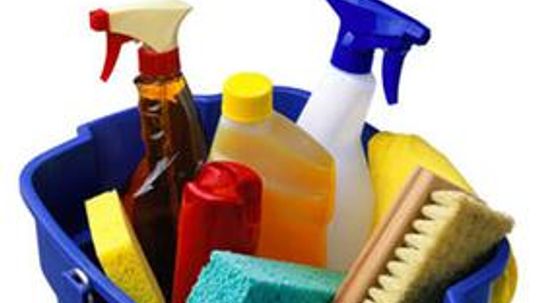As we strive for a cleaner and healthier environment, it is crucial to adopt responsible practices when disposing of toxic household chemicals. By taking proactive steps, we can minimize the potential harm these substances may cause to our surroundings and ourselves. Let us explore some effective strategies that prioritize safety while ensuring the proper disposal of such hazardous materials.
Prioritizing Safety: Protecting Our Environment and Well-being
In today’s world, where environmental concerns are at the forefront, it becomes imperative to handle toxic household chemicals with utmost care. These substances pose risks not only during their usage but also after they have served their purpose. By adopting safe disposal methods, we can prevent contamination of water bodies, soil degradation, and harmful effects on wildlife.
To begin this journey towards responsible waste management, one must first identify the hazardous materials present in their homes. Common examples include cleaning agents containing bleach or ammonia, pesticides used in gardening activities, old batteries from electronic devices or vehicles, as well as expired medications.
Once identified, it is essential to separate these toxic substances from regular waste streams. Creating a designated storage area for such items ensures they do not accidentally mix with other trash or end up in landfills where they could leach into groundwater sources over time.
An optimistic approach lies in exploring local recycling programs specifically designed for handling hazardous household waste. Many communities offer drop-off locations or scheduled collection events where residents can safely dispose of these chemicals without harming themselves or the environment.
Awareness and Education: Empowering Individuals for Positive Change
The key to fostering long-term change lies within education and awareness campaigns aimed at empowering individuals with knowledge about proper chemical disposal techniques. By equipping people with information on how certain products should be handled, we can collectively reduce the risks associated with toxic household waste.
Local governments and environmental organizations play a vital role in organizing workshops or seminars to educate communities about safe disposal practices. These initiatives not only raise awareness but also provide practical guidance on how to handle different types of hazardous materials effectively.
Furthermore, online resources and mobile applications have emerged as valuable tools for disseminating information on responsible chemical disposal. By leveraging these platforms, individuals can access comprehensive guides that outline step-by-step procedures tailored to their specific location and the type of chemicals they need to dispose of.
A Responsible Future: Collaboration for Sustainable Waste Management
The journey towards sustainable waste management requires collaboration between various stakeholders including government bodies, businesses, and citizens alike. By working together towards a common goal, we can establish robust systems that ensure the safe handling and disposal of toxic household chemicals.
Government agencies should continue investing in infrastructure that supports proper waste management facilities across communities. This includes establishing more collection centers equipped with trained personnel who can guide residents through the process while adhering to safety protocols.
In addition, manufacturers must take responsibility by designing products with eco-friendly alternatives or implementing take-back programs where consumers can return used items for proper disposal. Such initiatives promote circular economy principles while reducing the overall environmental impact caused by hazardous substances.
Closing Thoughts: A Brighter Tomorrow Starts Today
By embracing an optimistic outlook and adopting responsible practices when disposing of toxic household chemicals, we pave the way for a brighter future. Let us remember that our actions today shape tomorrow’s world – one that is cleaner, safer, and more sustainable for generations to come. Together, let us prioritize safety and work hand-in-hand towards creating a healthier environment where every individual plays an active role in preserving our planet’s well-being.


